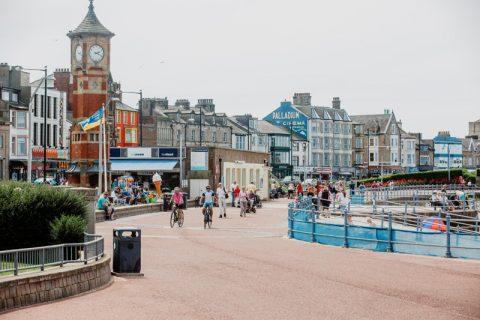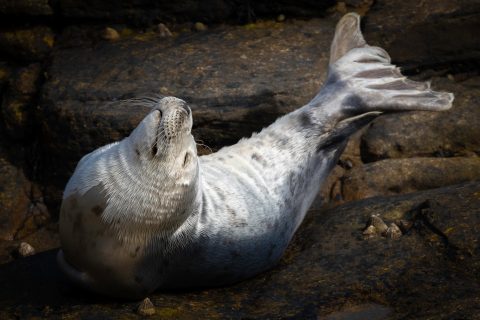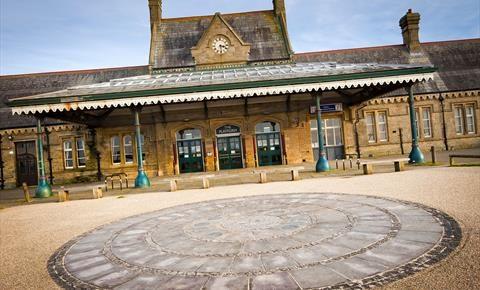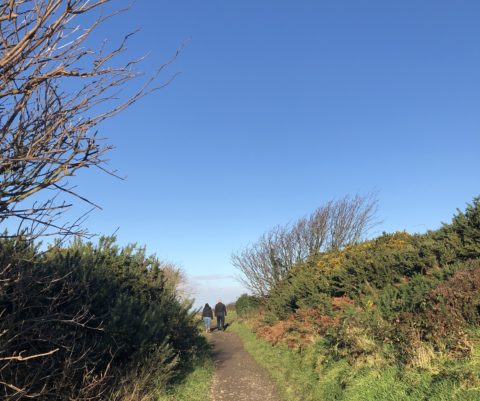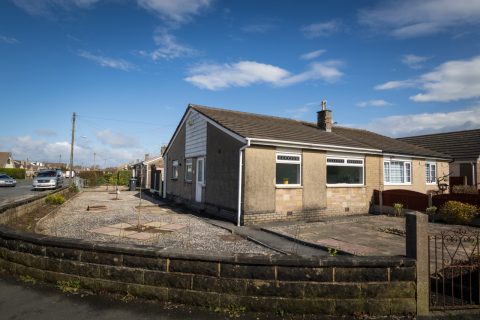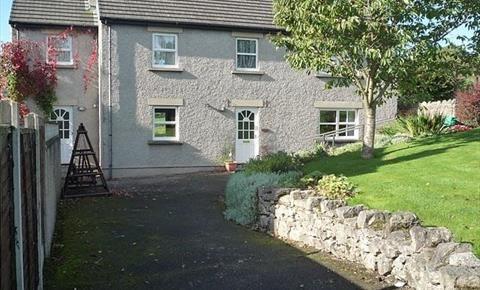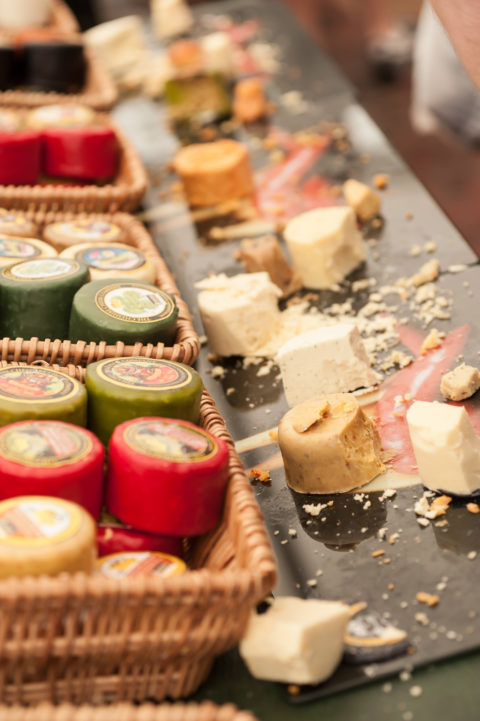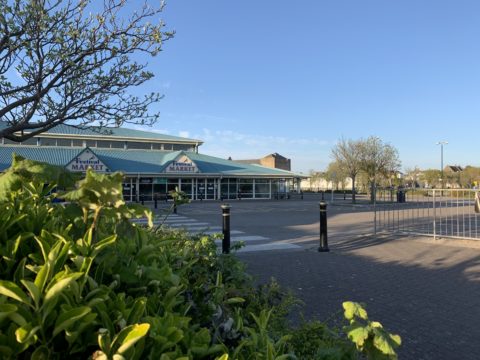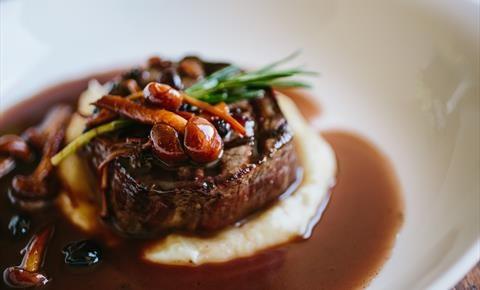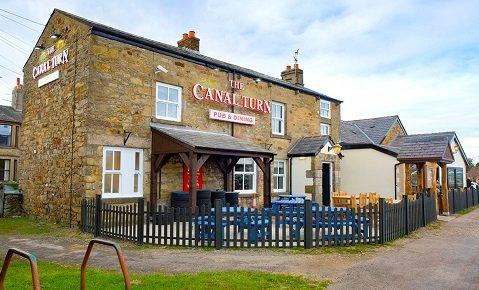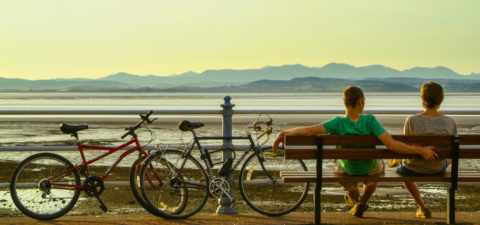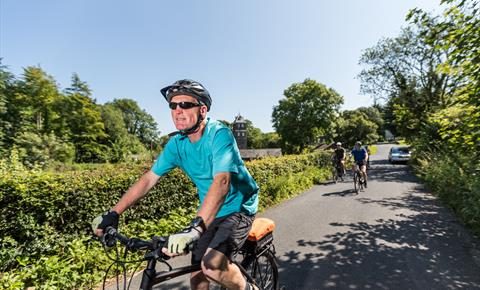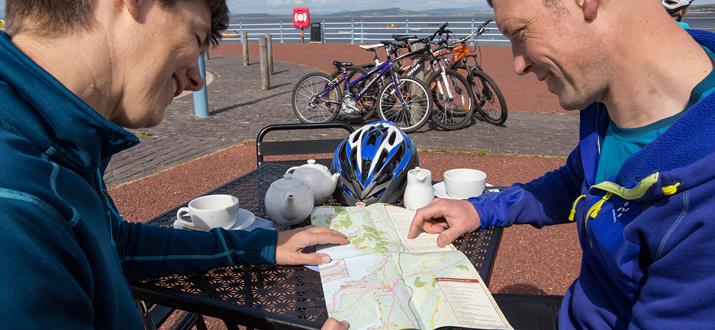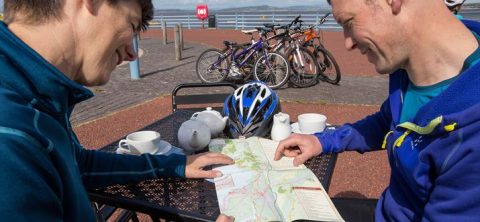Bay Cycle Way
Move along at your own pace, stop off for awesome views, sample mouth watering local food, see history come alive and receive a warm welcome.
Uncover the secrets of this stunning land and seascape and be intrigued and inspired by the natural environment, vibrant communities and proud heritage.
The Bay Cycle Way – NCN 700 – starts on Walney Island near Barrow and takes in the breath taking scenery right round to Glasson Dock south of Lancaster. This relatively flat route hugs the spectacular coastline of Morecambe Bay along quiet roads, greenways, canal towpaths and promenades.
Furness Peninsula
The route starts right by the beach at Sandy Gap which is also the start/end of the Walney to Wear and Whitby (W2W) National Cycle Network route 70. The island has two nature reserves, the North Walney National Nature Reserve offers sand dunes to explore, while South Walney has many hides to watch the island’s bird and sea life.
Heading off the island, the route first takes in Barrow – a town built on innovation and shipbuilding – with many fine Victorian buildings including the impressive town hall. The ride runs along the dockside before picking up the traffic-free Westfield Trail towards Roa Island where you can see the unmistakable outline of Piel Castle. In the summer season, a ferry takes visitors across to Piel Island and castle where you can visit The Ship Inn and meet the King of Piel (the landlord).
Following the coast road looking out over the Irish Sea you can stop awhile and you might spot some of Morecambe Bay’s regular visitors – terns, curlew, knot, oystercatcher and even grey seals. The route then heads inland to meander through the pretty villages of Leece and Dendron passing by Gleaston Watermill.
It then heads out to the atmospheric stone circle on Birkrigg Common offering spectacular views across the Bay before passing the Manjushri Kadampa Buddhist centre at Conishead Priory with its magnificent Temple for World Peace. The Hoad Monument dominates the approach to the attractive bustling market town of Ulverston – the festival capital of Furness with an assortment of specialist shops, colourfully rendered houses, cobbled streets and inviting cosy pubs.
Cartmel Peninsula
The route carries on towards the little village of Greenodd before crossing the Leven Estuary and on through Roudsea Woods in preparation for the climb up aptly named Bigland Hill. Catch your breath at the top before coasting downhill towards foody capital Cartmel (of sticky-toffee-pudding fame), and through to Flookburgh where the famous Morecambe Bay shrimps are available, in season – look out for signs at fishermen’s homes.
Moving back towards the coastline, the route passes through the genteel Edwardian town of Grange-over-Sands before heading back inland along the quiet old road adjacent to the A590 towards Witherslack and Levens villages and the historic house and stunning topiary gardens of Levens Hall.
Arnside and Silverdale area
Meander along the marsh road through the diverse natural habitat of the country’s smallest Area of Outstanding Natural Beauty at Arnside and Silverdale and visit the largest reed bed in Northwest England at Leighton Moss RSPB Nature Reserve – home to otters, red deer and breeding birds such as bitterns, bearded tits and marsh harriers.
Great views of the Bay can be had at Warton Crag before picking up the canal towpath at Carnforth, with much of the final section being traffic-free.
Lancaster and Morecambe area
Morecambe’s extensive promenade offers amazing sunsets, awe-inspiring vistas towards the Lake District hills and the chance for a photo with the Eric Morecambe statue – the pose is pretty much obligatory. This is also where the Bay Cycle Way meets up with the Way of the Roses coast to coast cycle route across Lancashire and Yorkshire. The town behind has lots of shops and opportunities for treats in the cafes and restaurants.
The final leg of the journey follows the Lune Estuary on a dedicated cycle-super-highway to the spectacular Millennium Bridge, the gateway to the historic city of Lancaster with its wealth of high street shops, museums and the imposing setting of Lancaster Castle famous for the trial of the Pendle Witches.
Turning south down the Millennium Trail via a traffic-free greenway, the route reaches its final destination at Glasson Dock with its cheerfully busy freshwater marina and sea dock.
Whilst there are one or two challenging climbs on the route – for example leaving Ulverston, Bigland Hill and Warton Crag, the climbs are relatively short and the views at the top are well worth the effort. The majority of the route is reasonably flat and on quieter roads where possible and the route has also been designed so that you are never far from a loo, a brew or a view.
Want to know more? Visit www.morecambebay.org.uk and sign up for our newsletter, or follow us on facebook and twitter with the hashtag: #BayCycle
Website
Gallery
Details
- https://www.morecambebay.org.uk/bay-cycle-way
- Arnside Silverdale and Carnforth Area Barrow Ulverston and Grange Area Morecambe Heysham and Lancaster Area

